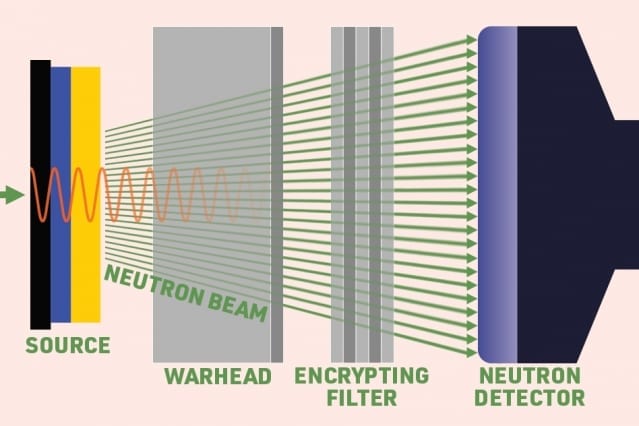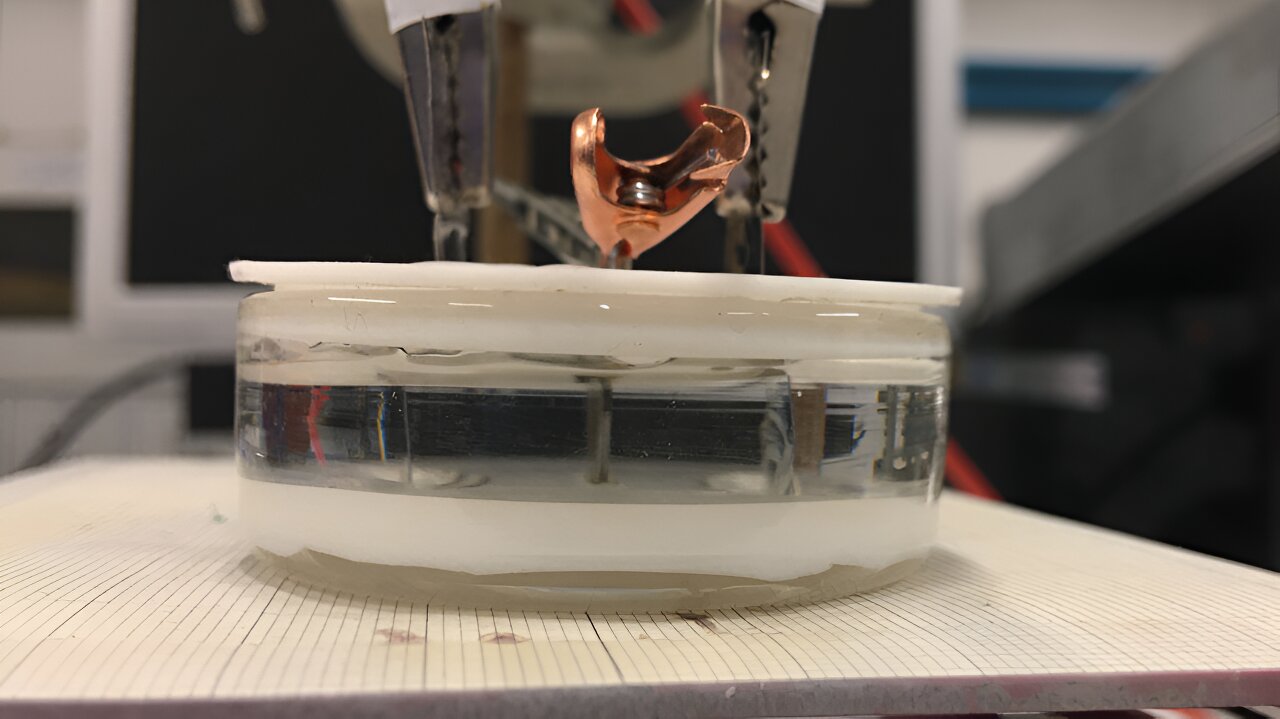
via Princeton University
Monitoring whether states are complying with nuclear disarmament treaties is not an easy task. An international team that includes a pair SPIA researchers has been exploring remote monitoring with the help of two antennas and a couple of mirrors.
The team, comprising IT security experts, developed a mechanism that uses radio waves to remotely monitor whether any changes are being made in a specific room – such as one used to store warheads. In a paper published online(external link) in Nature Communications two weeks ago, the researchers, from the Max Planck Institute for Security and Privacy in Bochum, Ruhr University Bochum, the University of Connecticut, Harvard University, PHYSEC GmbH, and Technische Universität Berlin, along with SPIA, describe how robust and secure this approach is.
The researchers envisioned a scenario in which State A wants to ensure that there are no changes in State B’s nuclear weapons stockpile – and to do so without permanent on-site monitoring.
“Seventy percent of the world’s nuclear weapons are kept in storage for military reserve or are awaiting dismantlement,” said Sebastien Philippe, an associate research scholars with SPIA’s Program on Science and Global Security. “The presence and number of such weapons at any given site cannot be verified easily via satellite imagery or other means that are unable to see into the storage vaults. Because of the difficulties to monitor them, these 9,000 nuclear weapons are not accounted for under existing nuclear arms control agreements.”
The removal of stored warheads raises the significant threat that they are being prepared for deployment. In the approach described in the paper, two antennas are used to record a radio fingerprint of the room where the weapons are being stored. One emits a radio signal that is reflected off the walls and objects in the room; the other records the signal. If an object in the room is moved even minimally, the radio fingerprint is noticeably changed. Major changes, such as the removal of a stored nuclear warhead, can thus be reliably detected.
However, the method works only if State B sends the radio fingerprint at precisely the time when state A requests it. It’s therefore necessary to prevent State B from recording the radio fingerprint and sending the recording instead of a just-measured signal. To prevent this, 20 rotating mirrors are initially installed in the room that is to be monitored. If the position of the mirrors changes, the radio fingerprint also changes. State A would record the radio fingerprints for different mirror positions during a one-time on-site visit and store them in a secret database. Periodically, State A could remotely request State B to send the radio fingerprint for a particular mirror position – and compare the measured data with the record in their secret database. If the data don’t match, there must have been a change in the room.
“This new verification technology addresses a long-standing challenge and contributes to future diplomatic efforts that would seek to limit all nuclear weapon types,” Philippe said.
To test the idea, the researchers set up a container with movable barrels on the campus of Ruhr University Bochum, Germany, which they monitored using radio wave technology. They found that radio fingerprints could be reliably reproduced for individual mirror settings, and that different mirror settings also produced a variety of easily distinguishable radio fingerprints. If the researchers moved one of the barrels in the container, just a few millimeters of displacement were enough to show up in the radio fingerprint.
The team also analyzed whether it’s possible to decipher how mirror positions and radio fingerprints correspond to each other using machine learning. Algorithms can indeed predict radio fingerprints if they recognize a number of mirror positions and the corresponding radio signals. Finding the connection, however, takes longer the more mirrors there are in the setup.
“At a time of heightened geopolitical tensions and with a new nuclear arms race brewing, this work is particularly timely and relevant,” said Philippe.
Original Article: Monitoring Nuclear Weapons Stockpiles With Radio Waves
More from: Princeton University | Max Planck Institute for Security and Privacy | Ruhr University Bochum | University of Connecticut | Harvard University | Technical University of Berlin
The Latest Updates from Bing News
Go deeper with Bing News on:
Nuclear weapons monitoring
- Lukashenko regrets Belarus lost nuclear weapons after Soviet Union's collapse
Alexander Lukashenko, the self-proclaimed president of Belarus, has branded the decision to withdraw strategic nuclear weapons from the country after the collapse of the Soviet Union a mistake. Source ...
- Minot Air Force Base to receive $850 million in upgrades with nuclear weapons updates
The Minot Air Force Base is in line for a nuclear-sized upgrade as the Department of Defense plans to update its nuclear deterrence capability across the country. During the Task Force 21 North Dakota ...
- IRGC commander says Iran may 'revise' nuclear posture if attacked by Israel
Islamic Revolutionary Guard Corps (IRGC) Maj. Gen. Ahmad Haghtalab, charged with protecting Iran's nuclear sites, said that Tehran has its "fingers on the trigger" to target the Israeli installations.
- US intends to monitor North Korean nuclear weapons with or without UN, ambassador says
Russia vetoed a U.N. resolution, effective ending the monitoring of weapons program sanctions against North Korea. The U.S. is determined to continue monitoring these sanctions.
- US seeks new mechanism to monitor North Korean sanctions
Moscow’s veto effectively abolished the regime, which was established to monitor North Korea’s compliance with UN sanctions imposed over its nuclear weapons and ballistic missile programmes ...
Go deeper with Bing News on:
Radio fingerprints
- Trump Would Gut and Privatize US Climate and Weather Agency, Experts Fear
Climate experts fear Donald Trump will follow a blueprint created by his allies to gut the National Oceanic and Atmospheric Administration (NOAA), disbanding its work on climate science and tailoring ...
- Chip Roy voices concern over George Soros’ purchase of major radio company, potential impact on Texas
TX Rep. Chip Roy sounded the alarm over Soros group's attempt to fast-track swath of American radio stations through foreign stakeholders ...
- God’s Fingerprints: The Trinity is Everywhere
We can see the trinity of space and the trinity of time as what might be called God’s fingerprints on his handiwork. For the atheist, however, who refuses to accept the existence of God and who ...
- LAURA INGRAHAM: From day one, Alvin Bragg was on a political mission, not a legal one
Fox News host Laura Ingraham lays out the "conspiracy of dunces" in her opening monologue Tuesday on "The Ingraham Angle." It is all a sloppy mess to boot. Colangelo is trying to convince the jury ...
- 10 Best Fingerprint Sensors
♦ 【FUNCTION】 -The R307 optical fingerprint module integrates a fingerprint algorithm chip with functions such as fingerprint input, image processing, feature extraction, template generation ...










